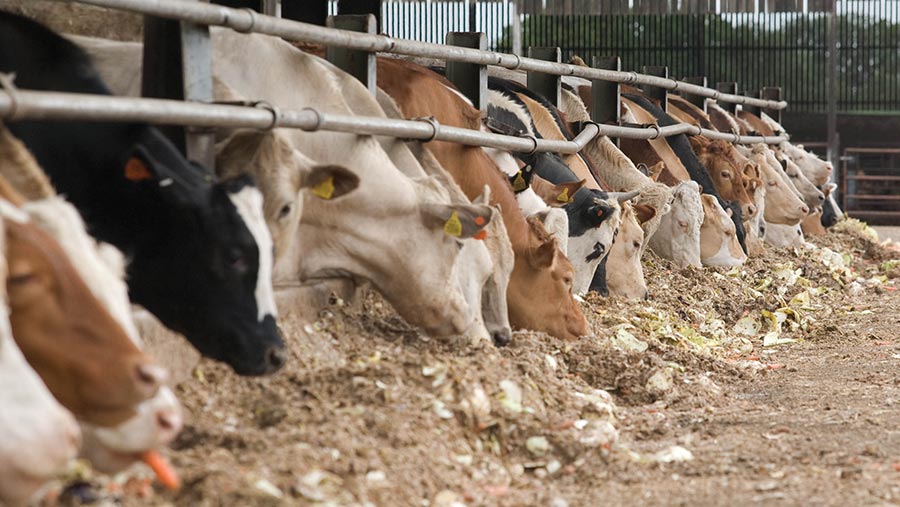Beef prices stay firm with tight supply outlook for 2024
 © Tim Scrivener
© Tim Scrivener Deadweight beef prices remain close to 40p/kg above this time last year, hovering around 480p/kg since mid-September.
Prices are being supported by tight supplies of cattle and improved retail demand in the build-up to Christmas, with abattoirs paying between 470p/kg to 485p/kg deadweight.
The total spend on beef by GB households increased by 8.9% to £4.8bn in the 52 weeks ending 29 October, according to data from market analyst Kantar.
Volumes were back on the year, especially for burgers and grill products, with the unsettled summer weather limiting opportunities for barbecues. However, this was more than offset by an increase in the average retail price.
See also: Beef trade holds strong with support at auction marts
Lower cattle prices in Ireland could offer some competition to GB values, with the Irish R3 steer price almost 90p/kg deadweight below its GB equivalent.
Live trade promising
The beef trade has been promising in the live ring, with liveweight steers averaging 258.6p/kg at GB auction marts for the week ending 21 November, while heifers averaged 269.2p/kg.
At Sedgemoor Auction Centre on 20 November, steers averaged 242.8p/kg liveweight, with prices topping at £2,104 a head. Heifers averaged 234.8p/kg liveweight.
Auctioneer Robert Venner told Farmers Weekly that trade had been fantastic in recent weeks, with Christmas demand from retailers seeming to come earlier.
Mr Venner said prices had remained firm and there was generally good support from retailers for British beef.
Numbers also remained fairly tight and clean beef was in most demand, with no sign of a switch to cheaper mince cuts, he added.
Scots trade
Figures from Quality Meat Scotland (QMS) showed cattle and sheep prices were 20-25% above the five-year average in early November.
Iain Macdonald, QMS market intelligence manager, said: “We have now seen a slight festive price uplift for prime cattle, with R4L steers reaching 500.5p/kg deadweight in Scotland in the week ending 11 November after seven weeks at 499p/kg.”
There was a 3.5% decline in beef cow numbers in the annual Scottish census, and a 3.6% decline in England’s June census, showing a tightening across the beef sector.
However, there are some signs the Scottish beef herd is now stabilising, with the number of cull cows coming forward at abattoirs starting to fall.
Mr Macdonald added: “In the longer term, we could see an effect on beef availability. ScotEID calf registrations show a significant impact from herd contraction in the first nine months of 2023, with a decline of 2.7% on 2022.”
Global beef outlook
Cattle prices in GB and the US have remained well supported in recent months, but prices in South America and Australia have been on a downwards trajectory.
Rabobank has forecast that global beef volumes will remain steady in 2024, with increased production in Australia, Brazil and Mexico offsetting declines in Canada and the US.
Rabobank senior analyst Angus Gidley-Baird said: “We expect Chinese demand to recover further in 2024, mainly driven by food service.”
AgriScot – Building Better Beef
Levy body Quality Meat Scotland has recently partnered with the AHDB and Hybu Cig Cymru (Meat Promotion Wales) to launch its Building Better Beef report.
It was unveiled by the levy boards at AgriScot on Wednesday 22 November and aims to improve the profitability, productivity and sustainability of suckler beef herds by looking into on-farm management practices.
The full report can be found on the QMS website.
